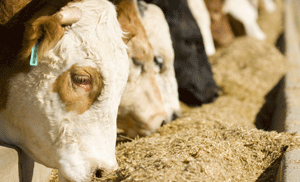
Written by: Victoria Broehm | January 10, 2023
 Wow, we’re already in week two of the new year, and I am still getting used to writing “2023.” Before we completely wrap up 2022, I wanted to briefly share an interesting development that happened just prior to everyone putting up their out of office messages for the holidays.
Wow, we’re already in week two of the new year, and I am still getting used to writing “2023.” Before we completely wrap up 2022, I wanted to briefly share an interesting development that happened just prior to everyone putting up their out of office messages for the holidays.
In late December, the American Feed Industry Association submitted comments to the U.S. Department of Agriculture’s Natural Resources Conservation Service (NRCS), asking the agency to expand the expertise and use of the feed management standard in current government conservation programs. The request stems from the agency asking the public how it should spend the $19 billion in funding that was provided in the Inflation Reduction Act (IRA).
The NRCS is looking to best maximize benefits for climate mitigation, including targeting practices and programs that provide quantifiable reductions in greenhouse gas emissions while providing for underserved producers.
Why is this noteworthy?
As data since 2014 shows, feed management has been the least used practice within NRCS’s conservation programs. The AFIA contends that feed management practices, including the use of products to reduce enteric methane emissions, within the NRCS are ripe to serve this need, quickly yielding environmental benefits and returns on public investment.
AFIA’s Leah Wilkinson, in comments to the agency, said:
“The AFIA encourages the NRCS to bolster the availability, awareness and practicality of the feed management practice by using its available IRA funding to build the necessary expertise and awareness. The NRCS must provide enough technical support and funding to spur adoption of the feed management standard to make headway in meeting President Biden’s greenhouse gas reduction commitments. These resources will give the feed management standard recognition as a valuable tool toward improving livestock and poultry production efficiencies that reduce the environmental footprint. However, putting money toward the standard is not enough. The NRCS should also identify internal opportunities and seek industry partners to advance the awareness, utilization and implementation capacity to achieve increased use on farms.”
She goes on to provide further areas that the NRCS should address so that livestock producers can gain access to the technologies they need at a faster clip.
While the AFIA is working on getting the regulatory process for these novel, emissions-reducing ingredients clarified (see our recent post on following the science on animal nutrition), we now are transitioning our way of thinking to getting these ingredients into the hands of producers who can make progress on farms. We know the “what” (I.e., the technologies that currently exist or are in research and development) to achieve the goal of emissions reduction in agriculture, but now we need the “how” - getting farmers to actually use them.
Read AFIA’s full comments to the NRCS here.
Comments See our policy on comments